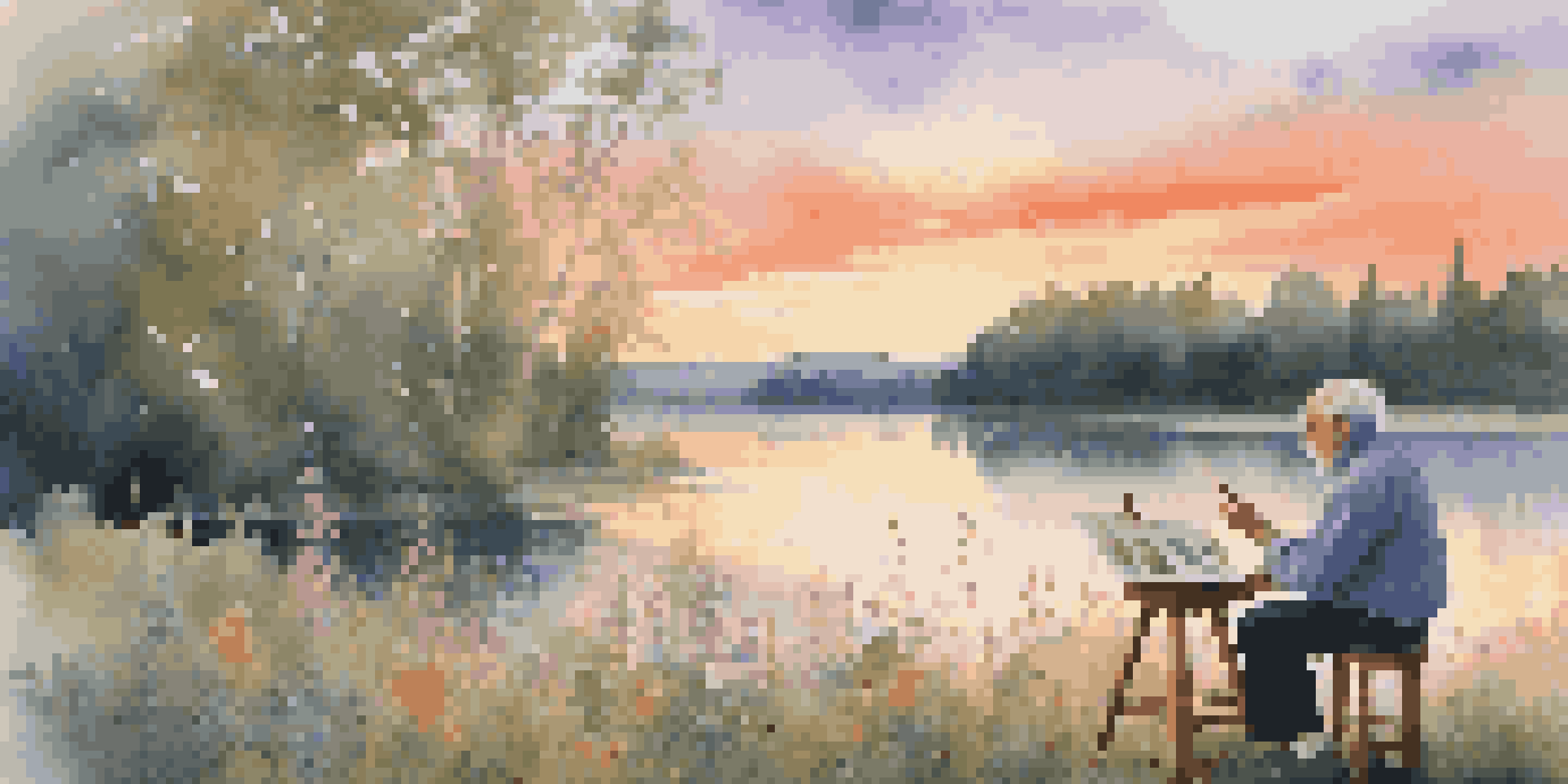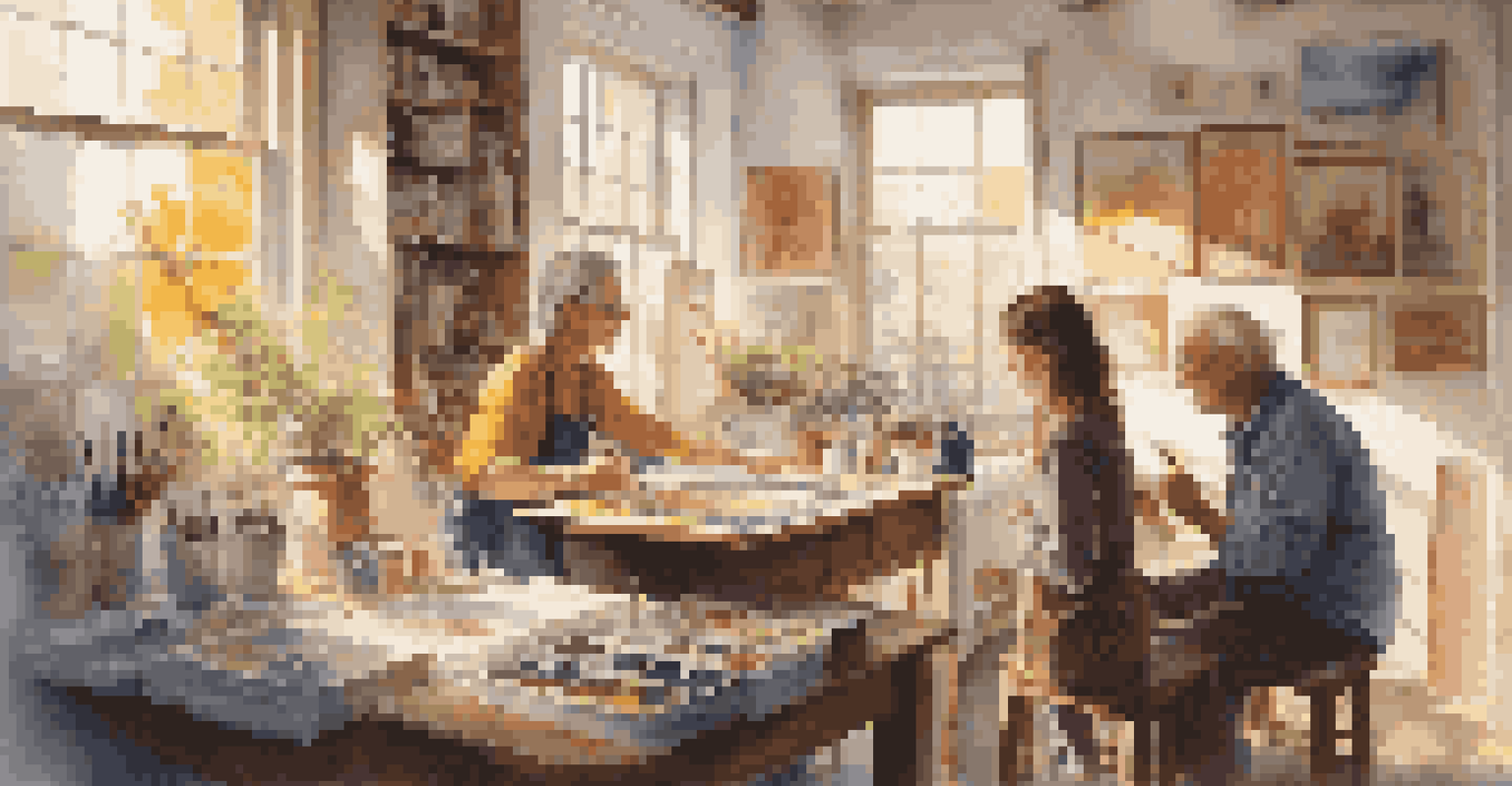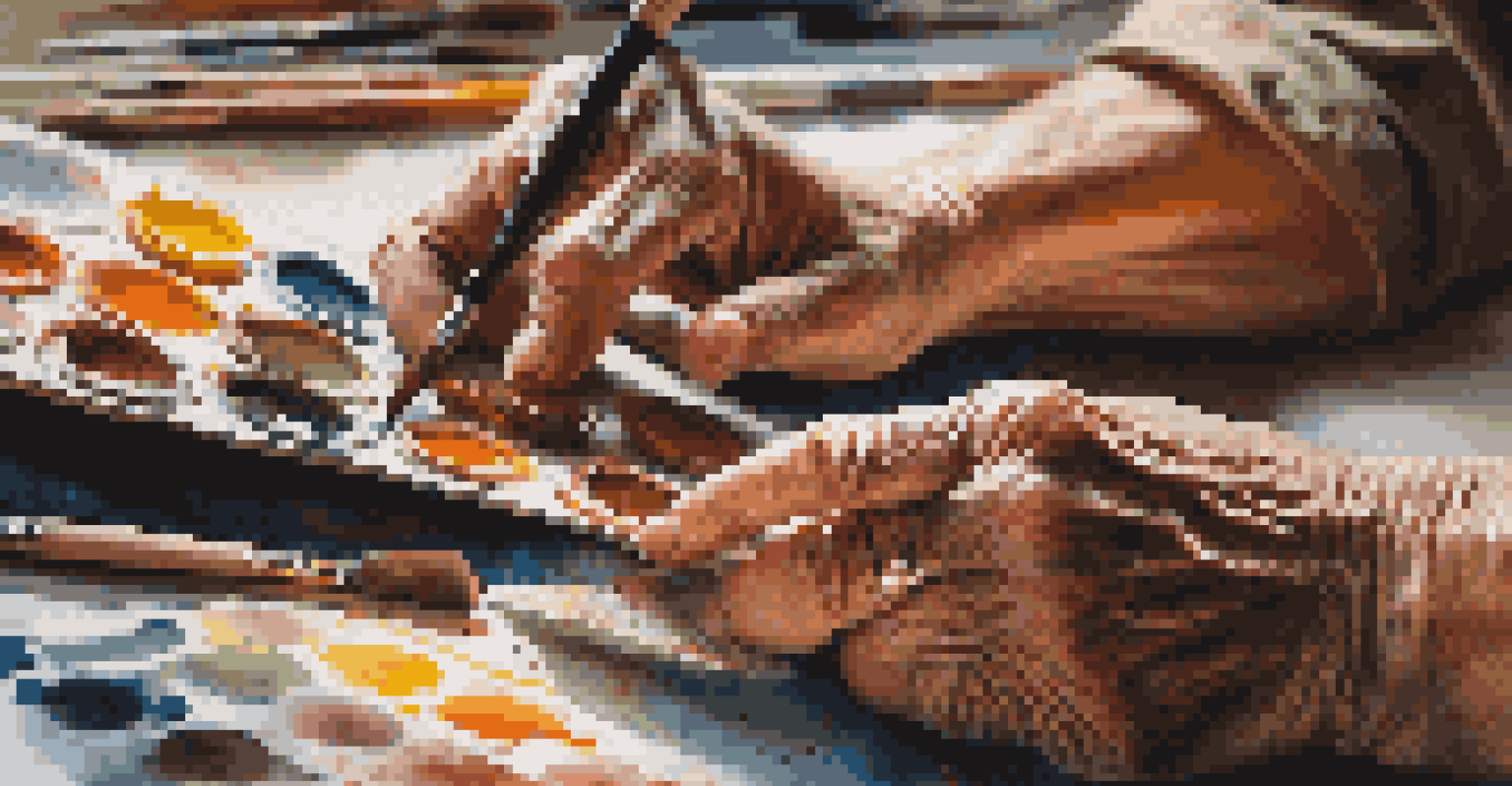The Influence of Aging on Artistic Styles and Techniques

The Evolution of Artistic Vision Through the Years
As artists age, their perspectives often shift, leading to a transformation in their artistic vision. This evolution can stem from personal experiences, maturity, and a deeper understanding of life. For instance, an artist who once focused on vibrant, chaotic scenes may gravitate towards more subdued, introspective works as they reflect on their journey. Such changes highlight how age can deepen the emotional resonance in art, creating connections that younger artists may not yet fully grasp.
Art is the most beautiful of all lies; it is the most truthful of all truths.
Moreover, the themes artists explore can evolve with age, reflecting their personal milestones and societal changes. Many seasoned artists begin to address themes of legacy, memory, and mortality, imbuing their work with a sense of urgency and wisdom. This shift can resonate with audiences who are at similar life stages, fostering a shared understanding that transcends generations.
Ultimately, the aging process enriches an artist's work, offering layers of meaning that can only come from lived experiences. As their artistic vision matures, they often become more attuned to the nuances of the human condition, inviting viewers into a dialogue about life’s complexities.
Technical Mastery: Skills Refinement Over Time
With age comes experience, and for many artists, this translates into refined technical skills. Years spent honing their craft allow artists to experiment more freely, pushing the boundaries of their chosen medium. For example, a painter may develop a unique technique that blends traditional brushwork with modern digital methods, resulting in innovative artwork that reflects their personal style.

As artists age, they often become more confident in their abilities, leading them to take creative risks. This newfound freedom can manifest in unexpected ways, such as the use of unconventional materials or bold color palettes. The blend of maturity and mastery often results in works that are not only visually striking but also conceptually rich.
Artistic Vision Evolves with Age
As artists age, their perspectives shift, leading to deeper emotional resonance and thematic exploration in their work.
In essence, aging can be seen as a journey towards artistic liberation, where the artist's accumulated knowledge and skills empower them to push creative boundaries. This evolution highlights the interplay between age and technique, fostering a unique artistic language that evolves over time.
Cultural Context and Its Impact on Artistic Expression
As artists age, their work often becomes a reflection of the cultural context in which they live. Historical events, societal changes, and cultural shifts can significantly influence an artist's perspective, resulting in works that resonate with contemporary issues. For instance, older artists might explore themes related to social justice or environmental concerns, drawing on their life experiences to comment on the world around them.
The older I get, the more I realize that the only thing I can really do is be myself.
In contrast, younger artists may be more focused on personal identity and self-exploration, leading to a generational divide in artistic themes. This divergence can create a rich dialogue between different age groups, as older artists provide wisdom and historical context while younger ones bring fresh perspectives. Together, they contribute to a dynamic artistic landscape that evolves over time.
Thus, the influence of cultural context on aging artists is profound, shaping not only their themes but also how they engage with their audience. As they reflect on their experiences against the backdrop of societal changes, their art becomes a powerful medium for commentary and connection.
Emotional Depth: Aging and Personal Experiences
The emotional depth of an artist’s work often increases with age, as personal experiences and challenges shape their creative output. Artists may draw upon their own life stories—joys, heartbreaks, and triumphs—to create pieces that resonate on a deeper emotional level. This connection can be particularly poignant, as viewers may find reflections of their own experiences in the artwork.
As artists confront themes such as loss, love, and resilience, their ability to convey complex emotions often improves. They may employ symbolism or metaphor to express feelings that words cannot capture, allowing their audience to engage with their work on a visceral level. This emotional authenticity often leads to a stronger bond between the artist and the viewer.
Technical Mastery Enhances Creativity
With years of experience, aging artists refine their technical skills, allowing them to take creative risks and push their artistic boundaries.
In this way, aging enriches an artist’s emotional palette, imbuing their work with a sense of vulnerability and honesty. The stories behind the art become integral to the experience, inviting viewers to not only see but also feel the narrative woven through each piece.
Influence of Technology: Adapting Artistic Techniques
As technology evolves, so too do the techniques artists employ in their work. Older artists often adapt to new tools and mediums, blending traditional methods with modern innovations. For example, many painters now incorporate digital tools into their practice, allowing for new forms of expression that can enhance their artistic vision.
This adaptation can also lead to the exploration of new genres, such as digital art or multimedia installations, broadening the artist's repertoire. The willingness to embrace technology can invigorate an artist's work, creating a dialogue between the past and the present. It showcases their ability to remain relevant in an ever-changing landscape.
Ultimately, the influence of technology on aging artists illustrates their resilience and adaptability. By embracing new techniques and tools, older artists can continue to evolve while staying true to their artistic roots, ensuring their work remains impactful and engaging.
Legacy and Mentorship: Passing on Knowledge
As artists reach a certain stage in their careers, many begin to contemplate their legacy and the impact they wish to leave behind. This reflection often leads to a desire to mentor younger artists, sharing their knowledge and experiences to foster the next generation of creators. Such mentorship can be incredibly rewarding, as it allows aging artists to pass on their skills and insights to those just starting out.
This transfer of knowledge not only benefits younger artists but also revitalizes the older artists' own practice. Engaging with fresh perspectives and new ideas can inspire aging artists to experiment with their own work, creating a symbiotic relationship that enriches both parties. It highlights the importance of community in the artistic process.
Legacy Through Mentorship
Older artists often embrace mentorship, sharing their knowledge with younger creators, which revitalizes their own practice and fosters community.
In this context, aging artists play a crucial role in shaping the future of the art world, ensuring that their experiences and lessons learned inform the next wave of creativity. Their commitment to mentorship underscores the idea that art is not just an individual pursuit but a collective journey across generations.
The Lasting Impact of Aging on Artistic Identity
Ultimately, the aging process profoundly shapes an artist's identity, influencing their style, themes, and techniques. As they navigate the complexities of life, their art becomes a reflection of their journey, encapsulating the essence of their experiences. This evolution reveals the dynamic interplay between personal growth and creative expression.
As artists age, they often become more attuned to their authentic selves, shedding societal expectations and creating work that resonates with their true identity. This authenticity can lead to powerful, unapologetic art that speaks to both the artist's journey and the broader human experience. The importance of self-discovery in the aging process cannot be understated.

In conclusion, the influence of aging on artistic styles and techniques is profound and multifaceted. By embracing their experiences and reflecting on their identities, aging artists enrich the art world, leaving an indelible mark that inspires future generations to explore their own creative paths.